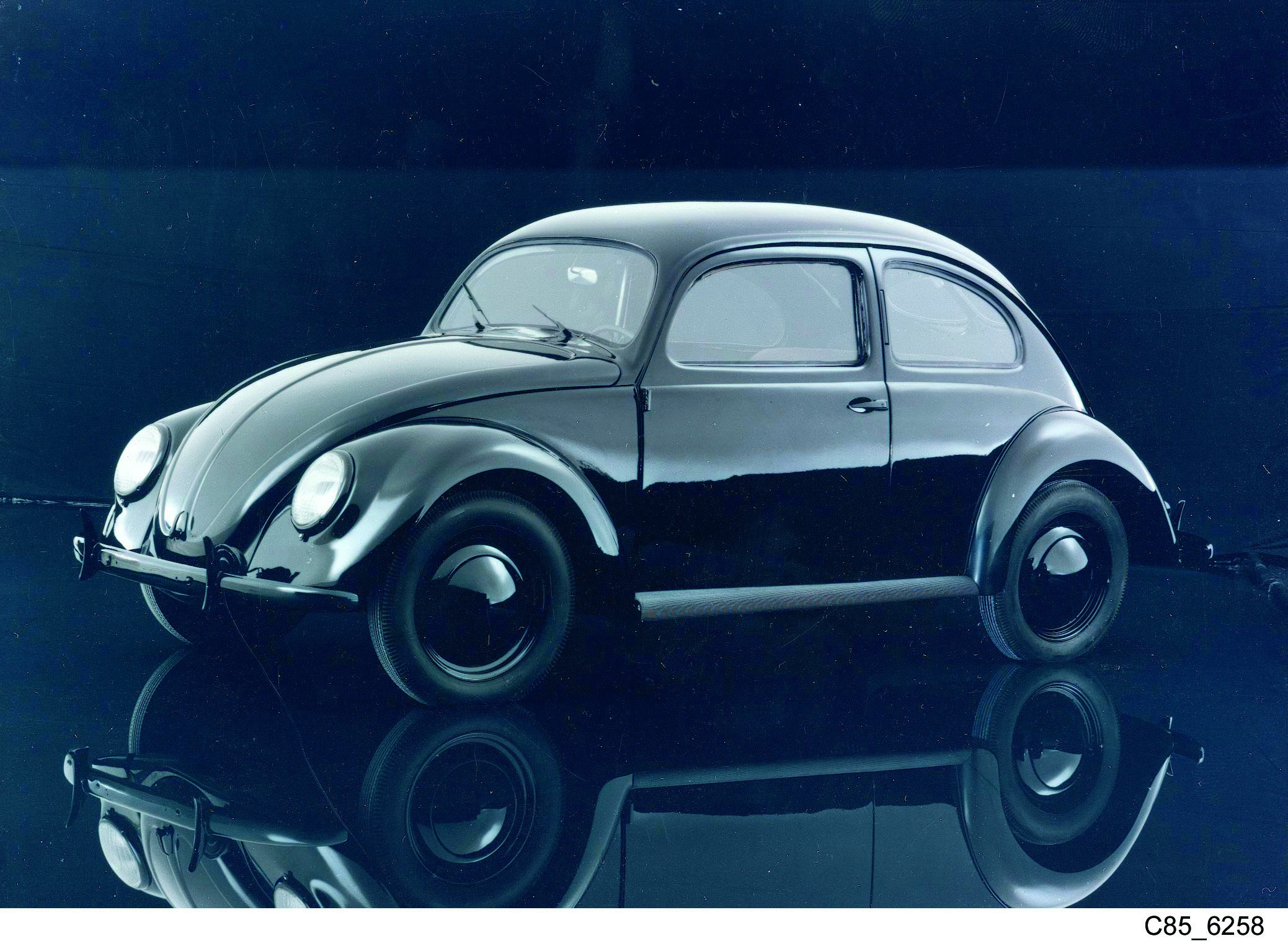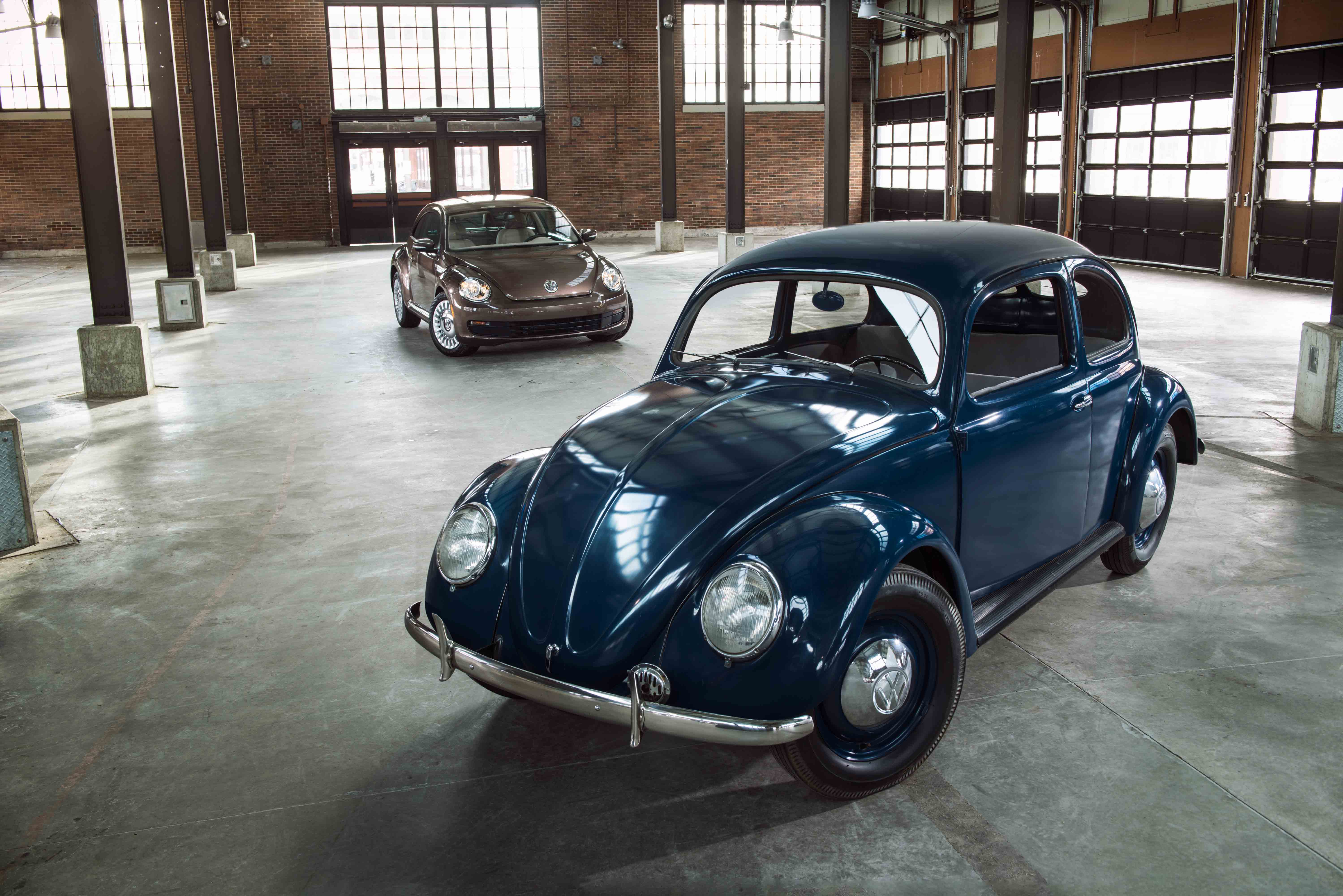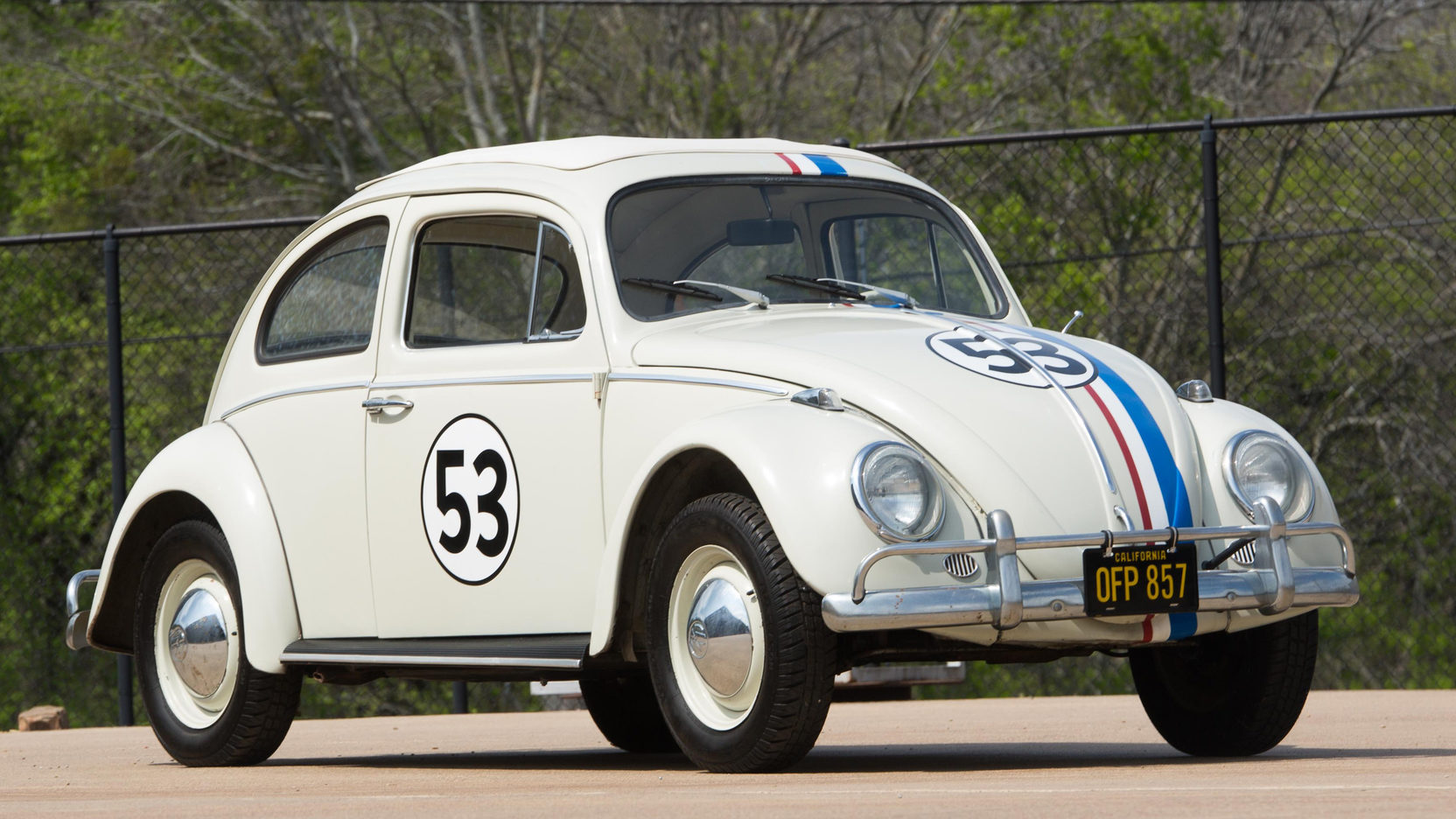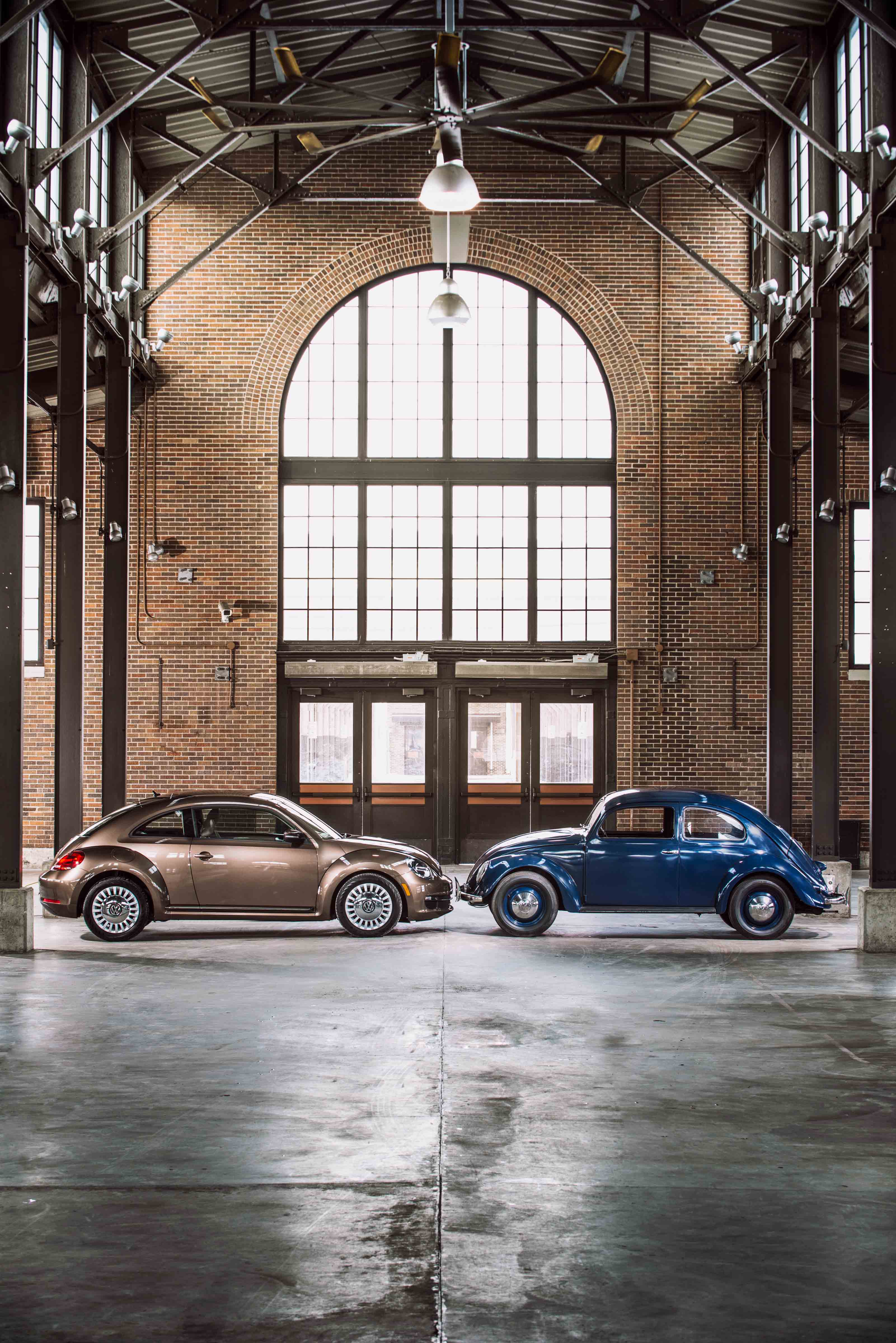The history of the Volkswagen Beetle as it turns 80 years old
The Frog, the Flea, the Cockroach. The Turtle, and the Mouse. The Little Egg, the Ladybird, the Bubble. In Denmark, it’s called a Pregnant Rollerskate—or the Hitler sled. In Mexico, Vocho or vochito. All nicknames referring to the People’s Car, or: the Volkswagen Beetle. Known by many monikers, the car means different things to different people, yet love for the VW Beetle is universal. Its creation was a global affair: beginning with a Czech design published in the French newspaper in the 1920s, then made in a German factory built by Italians, and put into production by British authorities after World War II. It eventually gained popularity in places as far-flung as Brazil, Ethiopia, Australia, and South Africa. The Beetle flourished in America, where you could find it lining the beach or curbs in the suburbs, and in Mexico, with its fleets of green-and-white taxis.
The VW Beetle’s origins were far from ideal. Though automotive innovation was once the domain of the Germans, World War I left Germany an economic mess, made worse by the stock market crash in the 1920s. Germany’s auto industry lagged behind England’s and America’s. When Hitler rose to power in 1933, he ordered the creation of six thousand kilometers of autobahns, “the pyramids of the Reich,” and as an admirer of fellow anti-semite Henry Ford, Hitler envisioned Ford-esque mass motorization: a small car that could be sold cheaply and in large numbers.



The system of autobahns would bring the people of Germany together, and affordable cars populating them would give the impression of an affluent nation that had been ushered into the modern age. This hypothetical vehicle could fit a German family of five, cost less than a Ford, yet “out-Ford” Henry. Hitler chose Ferdinand Porsche as its chief designer. Hitler laid the foundation stone for the new Volkswagen factory on May 26, 1938 where thousands of spectators were present. Even the New York Times reported on it, foreseeing Germany’s autobahns teeming with “thousands of thousands of shiny little beetles,” the earliest recorded use of beetle in reference to the tiny car.
If Hitler’s plan for bringing Germany together through cars and autobahns sounds utopian, it shouldn’t. Jewish drivers were banned from Germany’s most prominent car club and from its roads. And, unsurprisingly, Hitler did not keep his promise: the autobahn program was a massive failure, and the “people’s car” proved economically untenable, as Porsche kept designing prototypes that were more and more expensive. In 1938, only 600 of these cars were manufactured, and they delivered mostly to regime leaders. Once the war began, the factory Volkswagenwerk at Wolfsburg created vehicles for the army, supported by slave labor.
Although Adolf Hitler once drew his own concept for the car’s design, he likely had nothing to do with the Beetle’s final form. The Beetle was the product of Ferdinand Porsche and the consulting specialists Porsche hired, such as Austrian Erwin Komenda and Hungarian Béla Barényi, who published a design identical to the Beetle in the mid-1920s and is considered the true “father of the people’s car.”


Hitler, as it turns out, was the greatest obstacle for the People’s Car. What Hitler had hoped would be a symbol of Nazi Germany’s superiority became a symbol of hate and his betrayal. A German automotive journalist wrote in 1949: “Before the war, [the VW Beetle] existed only on paper, cheated people out of their savings, and yielded a lot of propaganda.” The end of World War II left the fate of Volkswagen uncertain. At first, none of the Allies wanted anything to do with the Volkswagen car, and Ford himself believed it was useless: “I don’t think what we’re being offered here is worth a damn.” British motor manufacturer William Rootes deemed it “too ugly and noisy,” and an overall poor investment.
Although it was still stigmatized for being Hitler’s car in Britain, the VW came to the United States in 1949 where it became mystifyingly popular in a short period of time. Its success could be credited to its size, unusual shape, engineering, and price point. There was a market for the compact car: people who were young, educated, and with more disposable income. The car defied Detroit, and the American trend of massive cars. Detroit represented power and luxury — dominating the postwar market with 95% of new cars sold in 1955 — but the VW was economical, tough, simple. Dominik Imseng wrote in Ugly is Only Skin-Deep: “Goliath was Detroit, the Volkswagen was David — and DDB’s creativity was his sling.”
In 1959, the Manhattan ad agency Doyle Dane Bernbach (DDB) took on the Beetle’s ad campaign. They devised bold, honest ads, including the iconic, Think Small.

In the Cold War years that followed World War II, the Beetle’s success felt like a comeback to the Germans. In a statement introducing the 1958 Beetle, General Director Heinrich Nordhoff said: “In ten short years the Volkswagen had risen from total obscurity to become a household name on every continent. Because it does not pretend to be anything but what it is — an honest car.” So its ad campaign was built on honesty. “Lemon,” an “anti-ad” was the most successful. They made the car’s weakness it’s strength. Their honest slogans included: “Ugly is only skin-deep,” “It makes your house look bigger,” “It’s ugly, but it gets you there,” “Live below your means.”
In 1963, Sports Illustrated declared, “The Volkswagen has found a home in America,” and called it, “the most easily recognized car on earth.” Its ties to Hitler weren’t such a stumbling block after all: the VW Bug proved the Federal Republic’s superiority to National Socialism, that New Germany was better than the Nazis. The Bug finally ruled Germany’s roads in the fifties and early 1960s. To the Germans, it represented postwar normalcy, and its unchanging silhouette felt something like stability. To Americans, the Beetle symbolized Germany’s recovery, an ambassador. More than that, it had come to represent idealism and peace, and it was embraced by an American counterculture that rejected consumerism and conformity. You could find the Beetle at the beach, at a demonstration, at a music festival, even in the suburbs. By 1968, the Beetle was the best-selling car in the world. The Love Bug debuted in 1968, the height of the Beetle’s popularity in America, in a subversion of its ugly beginnings. And in the 1970s, the Beetle became the first car to outsell the Model T in total production number.

With Nordhoff’s death in 1968, a global recession, the collapse of fixed-exchange rates in 1978, and the 1973 oil crisis, the Bug’s popularity slowly declined in 1970s America, with its U.S. sales shutting down in 1979. When the Beetle lagged in one country, it prospered in another, and its next home would be Mexico, where it thrived through the 1980s and ‘90s.
In ads for the Beetle in the 1980s, they called the Beetle el pan de cada día, meaning “daily bread,” likening the Beetle to a domestic necessity. Mexicans polled about the car said, “The vochito is me! It is made in Mexico.” Another explained, “Everybody had one.” The Beetle filled a void in the country: there was no popular vehicle made and designed first in Mexico, American cars had negative associations, so many Mexicans attributed their national identity to the Beetle. One man who had owned twelve VW Beetles in his life claimed, “I have a vochito in my heart.”
As the original began to fade in Mexico, VW decided to introduce the New Beetle in 1997, a notion suggested by designers James Mays and Freeman Thomas at VW’s studio in Southern California, then revised by German and Mexican engineers. Though the New Beetle boasted different engineering, its essential silhouette remained. Its new ad campaign boasted, “Less Flower — More Power.” The New Beetle was an homage to the original — a postmodern, nostalgic, biographical object. People decorated them, customized them, nicknamed them, loved them.
The Bug lives on in collective memory and in pop culture, most recently in Bumblebee, a throwback Transformers movie set in the 1980s, a story mired in nostalgia and due to be released this year — fifty years after the release of The Love Bug. The Beetle is a car repurposed and reclaimed, that became a success in spite of Adolf Hitler, not because of him. From ultranationalist to multinational, a broken promise became one of the world’s most trustworthy, beloved cars. The Volkswagen did become the People’s Car, but in a way that Adolf Hitler never could have envisioned, let alone endorsed. It transcended its Nazi origins. The German car that began as a Nazi emblem became a global icon and a symbol of peace.







I know this article is 5 years old, but it seems like you skipped over the actual production ending in Mexico in 2003. Not to mention the “New Beetle” being discontinued for the new “Beetle” production in 2012 on the unified VW platform.